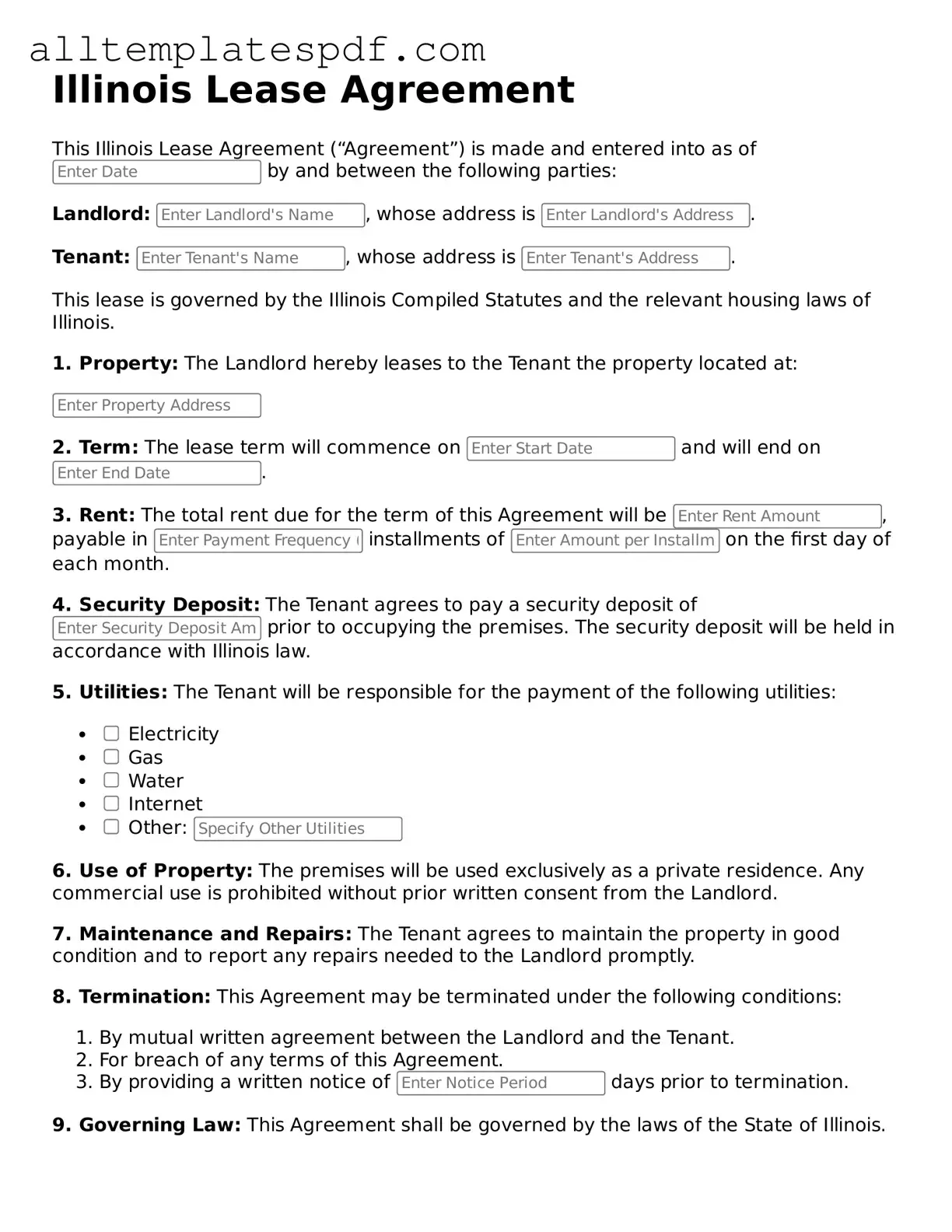Filling out the Illinois Lease Agreement form can seem straightforward, but there are common pitfalls that many people encounter. One frequent mistake is neglecting to include all required information. Each section of the lease has specific details that must be completed. Missing even one piece of information can lead to misunderstandings or disputes later on.
Another common error is failing to read the terms carefully. Many individuals rush through the agreement without fully understanding what they are signing. This can result in agreeing to terms that are not favorable or even detrimental. Taking the time to review each clause ensures that both parties are on the same page.
People often forget to include the correct dates. The start and end dates of the lease are crucial. If these dates are incorrect or missing, it can create confusion about when the lease begins and ends. This oversight can lead to disputes regarding rent payments and occupancy.
Additionally, some individuals do not specify the rent amount clearly. The lease should state the exact amount due each month, along with the due date. Ambiguities in this section can lead to disagreements over payments and could even affect the tenant's ability to stay in the property.
Another mistake is not documenting the security deposit properly. The lease should clearly outline the amount of the security deposit, the conditions under which it will be returned, and any deductions that may apply. This clarity helps protect both the landlord and the tenant.
Many people also overlook the importance of including additional terms or conditions. If there are specific rules about pets, maintenance responsibilities, or noise levels, these should be detailed in the lease. Failing to include these stipulations can lead to conflicts down the line.
Lastly, individuals sometimes forget to sign and date the agreement. A lease is not legally binding until all parties have signed. This final step is crucial for ensuring that both the landlord and tenant are committed to the terms outlined in the document.
